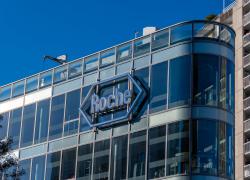
Like Merck, Bristol goes to China
Yet another rich ADC deal is struck as Bristol Myers Squibb ties up with China’s SystImmune.
Yet another rich ADC deal is struck as Bristol Myers Squibb ties up with China’s SystImmune.

Bristol Myers Squibb had stood out among oncology-focused big pharma groups in not having a major presence in antibody-drug conjugates, but that changed today. The company’s $800m licensing of SystImmune’s izalontamab brengitecan, a bispecific ADC that hits EGFR and HER3, ranks as one of the richest ever for a Chinese biotech.
The move is somewhat reminiscent of Merck & Co, which also went to China for ADCs, giving Kelun $222m across two transactions for assets including the TROP2-directed sacituzumab tirumotecan. Merck then struck a monster $5.5bn tie-up with Daiichi Sankyo, and through this it gained patritumab deruxtecan, which shares HER3 targeting as a common feature with SystImmune’s iza-can.
Still, iza-can, also known under the lab code BL-B01D1, has a curious design. At this year’s ASCO conference it was described as a MAb with high affinity for EGFR and low affinity for HER3, comprising a cleavable linker bound to a novel (Ed-04) topoisomerase I payload and featuring a drug-to-antibody ratio of eight.
Pan-killing
The company argues that EGFR and HER3 are highly expressed in various epithelial tumours, and targeting both receptors “could provide a broad-spectrum, pan-tumour killing therapy”. It’s likely that the data presented at ASCO, from a phase 1 first-in-human solid tumour study, spurred today’s deal, under which Bristol is gaining US rights.
Here iza-can boasted a 45% overall response rate, with the highest activity in NSCLC, both EGFR-mutant and wild-type, and nasopharyngeal carcinoma. However, median follow-up was just four months, treatment-related dose reductions were implemented in 25% of patients, 29% experienced severe treatment-related adverse events, and there were two treatment-related deaths; on the plus side, there was no interstitial lung disease.
Meanwhile, a recent San Antonio Breast Cancer Symposium abstract showed activity in a small number of breast cancer patients in a separate trial, again with relatively high rates of grade 3 or higher adverse events.
Interestingly, SystImmune’s pipeline also includes BL-M02D1, an ADC against TROP2. This target is gaining interest because of Daiichi’s AstraZeneca-partnered datopotamab deruxtecan, as well as the Merck/Kelun asset and Gilead’s marketed Trodelvy, but the Bristol deal is for now limited to iza-can.
Izalontamab brengitecan first-in-human data
| Median prior lines | ORR | |
| EGFRm NSCLC | 3 | 63% (n=38) |
| Nasopharyngeal | 3 | 54% (n=28) |
| TNBC | 2 | 46% (n=11) |
| EGFRwt NSCLC | 2 | 45% (n=49) |
| HER2 low/-ve breast cancer | 4 | 33% (n=9) |
| HER2 +ve breast cancer | 5 | 25% (n=8) |
| SCLC | 2 | 14% (n=7) |
| Head & neck squamous | 3 | 7% (n=15) |
| Other | 3 | 0% (n=2) |
Source: ASCO & SABCS.
2849













